Hi, everyone!
This is Comny.
A little while ago, I attended a seminar and wine tasting event hosted by the California Wine Institute.
These days, cooler wine regions are becoming a hot topic thanks to climate change.
Today, I’d like to introduce one of them—the West Sonoma Coast.
Overview covering climate, soil, and history, and another focusing on wine tasting with expert insights from sommelier Mr. Iwata, along with a Q&A session.
This report might feel a bit more technical than my usual posts, but I think you’ll find it interesting. I hope you enjoy reading!
Let’s dive in!
What is the West Sonoma Coast AVA?
What even is that?
“What are you even talking about, Comny? Wait, hold on! Don’t leave me behind!”
Relax, everyone—Comny’s got your back!
Let’s start by breaking down this intimidating term: “West Sonoma Coast.”
First off, Sonoma is a county in California, USA, and a famous wine-producing region. Fun fact: California is responsible for about 80% of the wine produced in the US. That’s a massive number! You know how the human body is 60-70% water? Well, California’s wine production percentage is even higher (okay, bad comparison).
Some of you might already be thinking, “Oh yeah, I’ve had California wine before!”
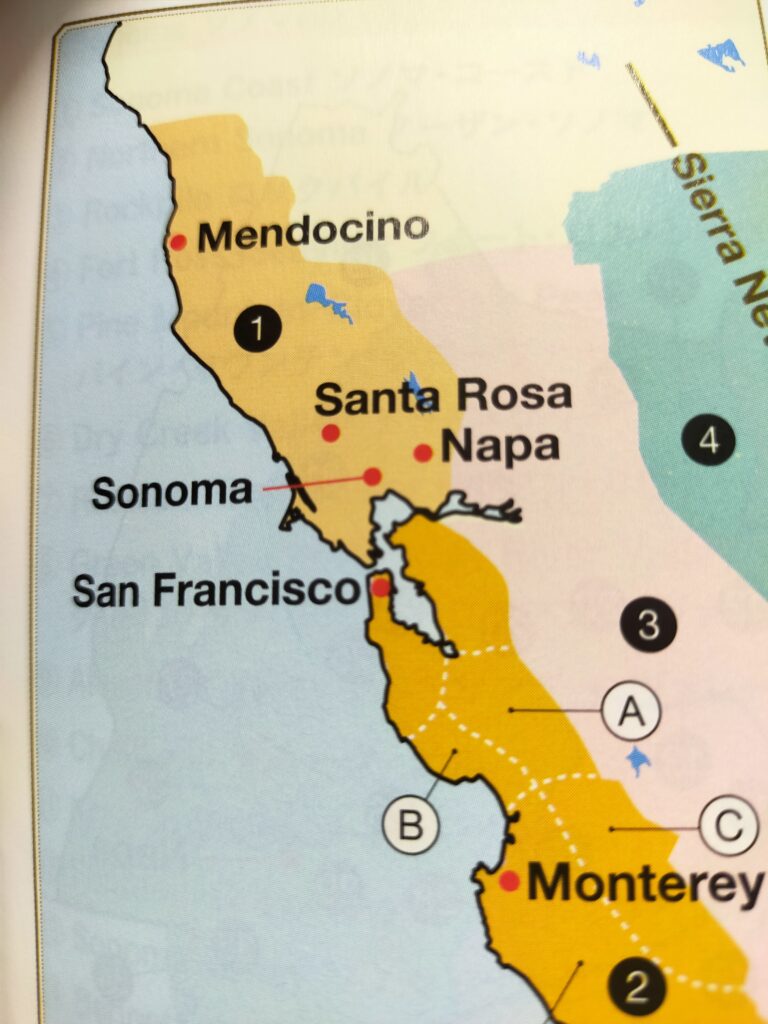
Sonoma County, located just north of San Francisco, is known as a historic and prominent wine region. You’ve probably also heard of Napa Valley—home to wines like Opus One—which is a bit further inland from Sonoma.
Now, the West Sonoma Coast is the westernmost part of Sonoma County, right along the Pacific Ocean.
Feeling less intimidated by the name now?
Great!
Historically, this area was part of the expansive Sonoma Coast AVA (American Viticultural Area), which was established back in 1987. But because the terroir here is so unique and distinctive, efforts were made to establish it as its own AVA. Last May, those efforts paid off, and the West Sonoma Coast AVA became official!
It’s a relatively new AVA, so you’re not alone if you didn’t know about it.
See? We’re all in this together.
Time to stay updated!
The Pacific Ocean’s cool breezes and fog, along with the high elevation of its hills (or mountains?), create a cooler climate. This region is known for producing elegant Pinot Noir and Chardonnay with moderate alcohol levels.
As a self-proclaimed Pinot enthusiast, there’s no way I could ignore a region like this.
Now that you’ve got the basic idea, let’s dive into the details from the seminar!
About the Climate of the West Sonoma Coast

Looking at the map, you’ll see that the area now recognized as the West Sonoma Coast AVA is part of the broader Sonoma Coast AVA, which also includes regions like Russian River Valley and Carneros.
West Sonoma Coast lies on the westernmost edge of this vast AVA.
Naturally, being so expansive, the characteristics of this area are quite different from other regions within the Sonoma Coast AVA.
We wanted to clearly highlight how the terroir of the West Sonoma Coast stands out from the rest of Sonoma Coast.
The Influence of the Pacific Ocean
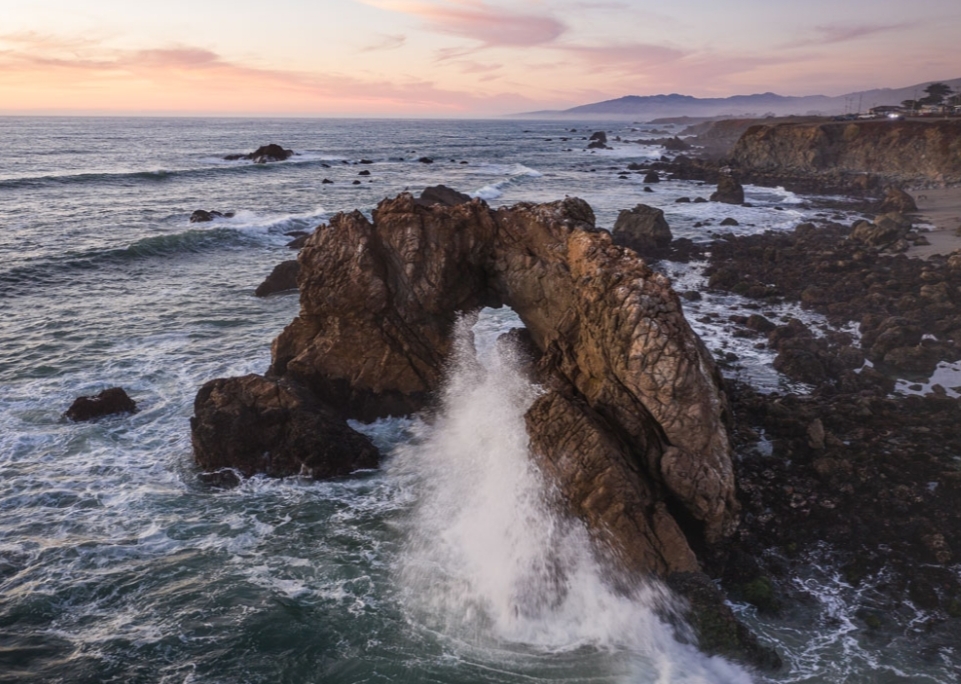
So, what makes this region unique and special? It’s all about the marine climate.
The Pacific Ocean is right next to us, with its chilly waters that never rise above 11°C throughout the year.
There are steep hills lining the coastline, and cold winds blow over these hills, keeping the air cool—even during the hot summer months. As a result, the annual average temperature here is about 15-17°C, which is almost too cold for grape cultivation.
This area is one of the few places in the world with such a cool marine climate. Pinot Noir and Chardonnay are typically grown in more inland areas with continental climates, where it’s hot during the day and cooler at night. However, such conditions often lead to shorter growing seasons, which can affect wine styles.
Unlike continental climates, this area benefits from its marine climate.
How Cool Climates Shape Wine
Why is this important, and how does it influence the character of wine?
For instance, in hotter climates, sugar accumulates more quickly.
As you know, sugar plays a key role in wine—it’s converted into alcohol during fermentation. The higher the sugar content, the higher the alcohol level.
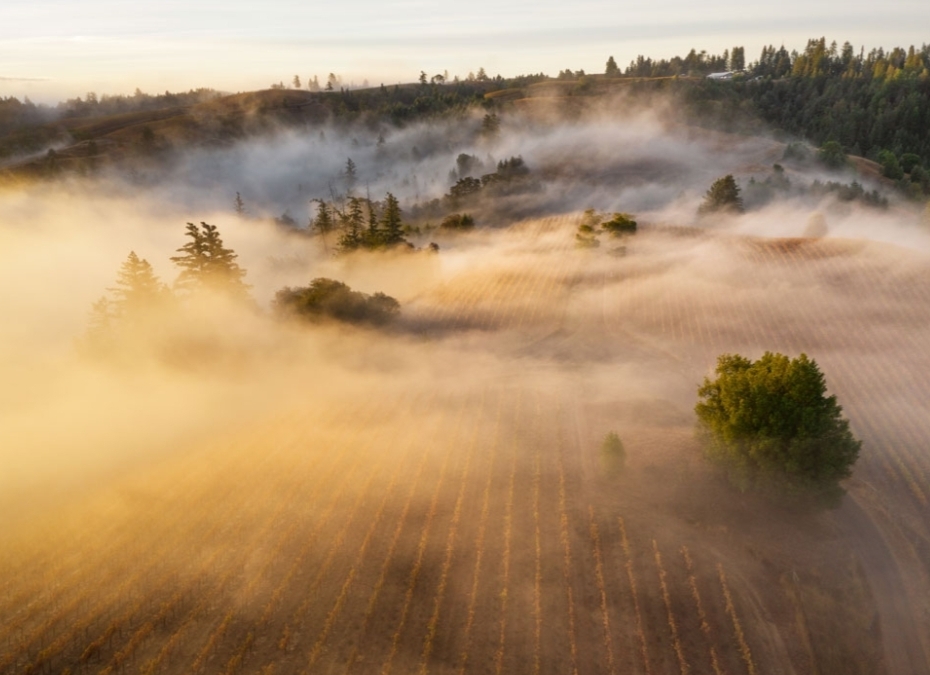
Here in the West Sonoma Coast, the cooler daytime temperatures allow for more balanced ripening.
Phenolic compounds, which contribute to flavors, tend to develop better with slower ripening.
This extended “hang time” helps tannins, pigments, and other elements mature fully, leading to balanced ripeness.
Cool climates soften alcohol levels, allowing the terroir to shine more vividly in the glass.
Of course, the sunny blessings of California bring delightful fruit-forward qualities to the wine. But beyond that, this region’s wines have elegant floral notes, earthy nuances, and even complex aromas reminiscent of tea leaves.
About the Terrain
The Gift of Redwood Trees
As I’ve mentioned before, the West Sonoma Coast is notably cool, but it’s also home to dense forests filled with majestic redwood trees.
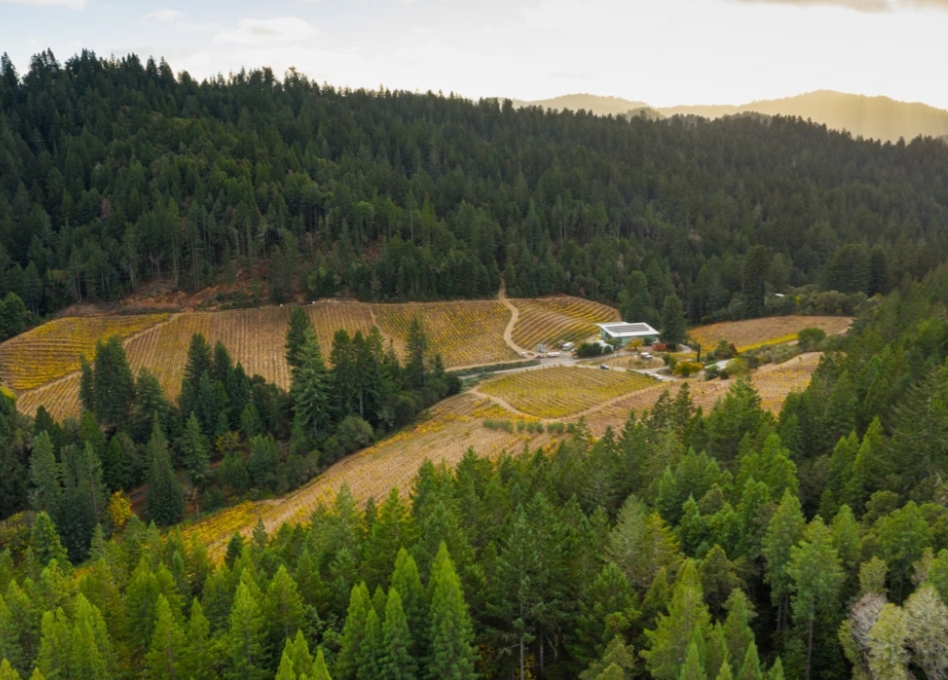
Redwoods are massive—large enough that it would take 10–20 adults holding hands to circle the trunk.
These ancient trees, standing tall for millions of years, have enriched the soil with organic matter over time.
This process has created remarkably fertile ground.
What’s more, the forests surrounding this area have given rise to unique microclimates.
The Pacific Ocean brings moisture inland, which influences these forests.
Additionally, the cold currents flowing from Alaska don’t just deliver chilly winds and fog—they also sustain local fisheries in this region.
Micro Terroirs Created by Tectonic Activity
The West Sonoma Coast is also shaped by the famous San Andreas Fault—a major geological fault line. This fault forms a boundary between the Pacific Plate on the west and the North American Plate inland. In this area, these tectonic plates collide and shift, causing the land to subside or rise over time.
This tectonic activity has resulted in diverse topography, with elevations ranging from 100 to 500 meters. These variations create distinct microclimates and micro-terroirs. Parts of this land were once beaches, rivers, or lakes, and the uplift from tectonic shifts has mixed soils together, forming incredibly diverse and fascinating soil profiles.
The elevation also plays a role in defining wine character—vineyards located above the fog line or below it each offer unique qualities to the grapes they produce.
Sustainable Practices
Thanks to this rich soil, sustainable farming methods are a natural fit here.
With organic matter accumulated over hundreds of years, there’s no need for artificial fertilizers. Vineyards can thrive without irrigation, supported by the soil’s natural fertility.
The result is wines with vibrant acidity and exceptional beauty. The cool climate and unique soil conditions come together to create wines that truly stand out.
The History of the West Sonoma Coast
Over 1,000 Years Ago
The area we now call the West Sonoma Coast was originally home to the Kashaya Pomo people.
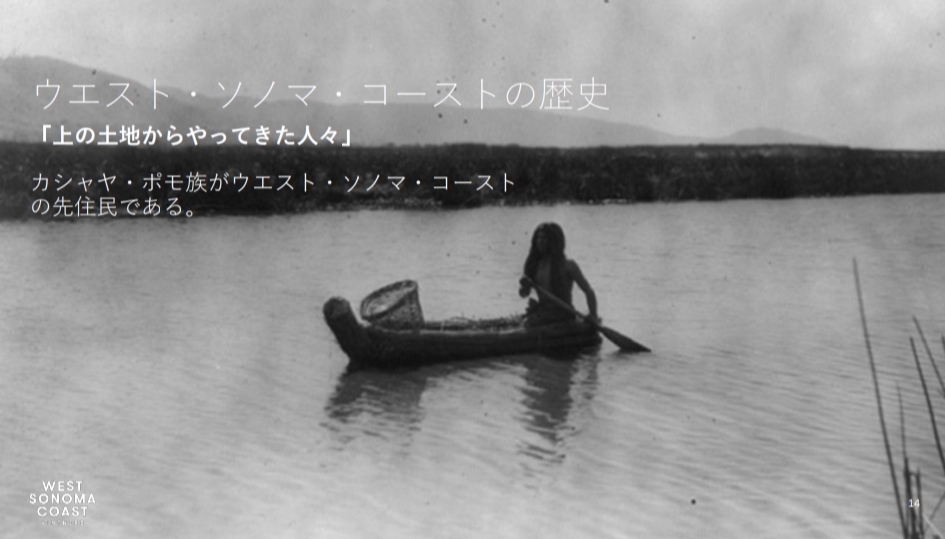
The name “Kashaya Pomo” means “people from the top of the land.”
During summer, they lived along the coastline, fishing and gathering food.
In winter, however, they moved uphill to escape the cold.
While it might sound counterintuitive, the high mountains here rise above the fog, offering more sunlight and warmth.
During the colder months, they hunted, foraged for nuts, and thrived in these elevated areas.
19th Century
In the early 1800s, the undeveloped California coastline attracted explorers from various nations—mainly Russia, Spain, and Mexico.
The Russians were the first to arrive in 1809, traveling south from Alaska while hunting sea otters and seals for their fur.
To this day, the region bears traces of Russian influence, such as the Russian River Valley and the town of Sebastopol (named after the Russian word Sevastopol).
However, overhunting and unsuccessful agriculture eventually led the Russians to leave by the 1840s.
The Mexican government then took over, distributing land to settlers.
At this time, the American settlers had not yet made their way west.
Land grants during this period were a bit unconventional—essentially a “claim-your-land” race where participants marked their territory with flags.
1949: The Gold Rush
In 1849, gold was discovered in California, triggering the famed Gold Rush.
People, dubbed the “49ers,” swarmed the region in search of fortune, leading to a population explosion.
This marked the beginning of California’s path to statehood.
The rapid influx of people sparked a demand for housing and development, leading to the large-scale deforestation of redwood trees for timber and the rise of the lumber industry.
20th Century
The construction of the Pacific Coast Railroad revolutionized transportation along the coast.
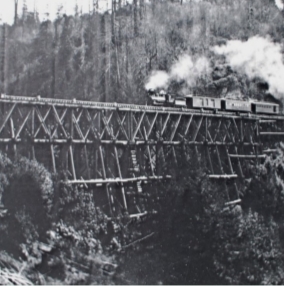
What once took hours of travel across fields and mountains was reduced to a much shorter trip by train.
This development made Sonoma a popular destination for recreation and expanded agricultural endeavors, including orchards and farming.
However, the Prohibition era (1920–1933) brought challenges.
Over 200 wineries once thrived in Sonoma, but many shifted to fruit farming due to the ban on alcohol production.
Once Prohibition ended, vineyards gradually returned, and the wine industry began to recover.
1970s: Pioneers Emerge
The 1970s saw the arrival of pioneering winemakers who began planting vineyards in the West Sonoma Coast’s cool, coastal areas. Notable names include:
- 1972: Bohan Ranch
- 1974: Hillcrest ‘Day One’ Vineyard
- 1978: Summa Vineyard
- 1980: Hirsch Vineyard
- 1982: Hellenthal Vineyard
These early efforts were a bold gamble—nobody was sure if grapes could truly thrive here.
Yet, driven by vision and determination, these pioneers ventured into remote areas and planted their vines.
1990s and Beyond
By the 1990s, movements to establish the West Sonoma Coast as an official AVA began to take shape.
This push was fueled by the exceptional elegance and quality of wines produced from the grapes planted by the early pioneers.
Inspired by these trailblazers, new winemakers followed suit, either purchasing grapes from existing vineyards or planting their own.
Despite the challenges—such as steep terrain and cool, foggy conditions that limit grape yields—these winemakers persevered, driven by their commitment to crafting beautiful wines.
Raising the Resolution on the West Sonoma Coast
How big is the area?
The total area is about 400 hectares—roughly 1/50th the size of Burgundy, making it a very small region.
While the vineyard area is compact, it stretches vertically along a north-to-south axis.
Comparing this to Burgundy, where excellent vineyards are typically found on hillside slopes, the West Sonoma Coast’s vineyards tend to be located along ridge lines due to tectonic activity shaping the terrain.
Although people often ask about climate differences between the northern and southern parts of the region, the east-west differences are actually more striking.
Within just a 15-minute drive, the temperature can vary significantly, highlighting the uniqueness of this area.
How do redwood trees influence the wines?
One key aspect is the mist in this region—redwoods help absorb this moisture.
How?
By capturing water from the air, causing it to condense on their leaves and drip onto the ground.
Though it might seem like a minor detail, this contributes to the equivalent of about 8 centimeters of rainfall over a month in summer, reducing the need for irrigation and supporting grape cultivation.
Secondly, redwoods enrich the soil with natural organic matter, enhancing its quality.
Lastly, redwoods contribute to the soil’s acidity.
While the soil is fertile, the acidic nature prevents grapevines from absorbing excessive nutrients, naturally lowering yields.
Reduced yields mean higher-quality grapes, resulting in exceptional wines.
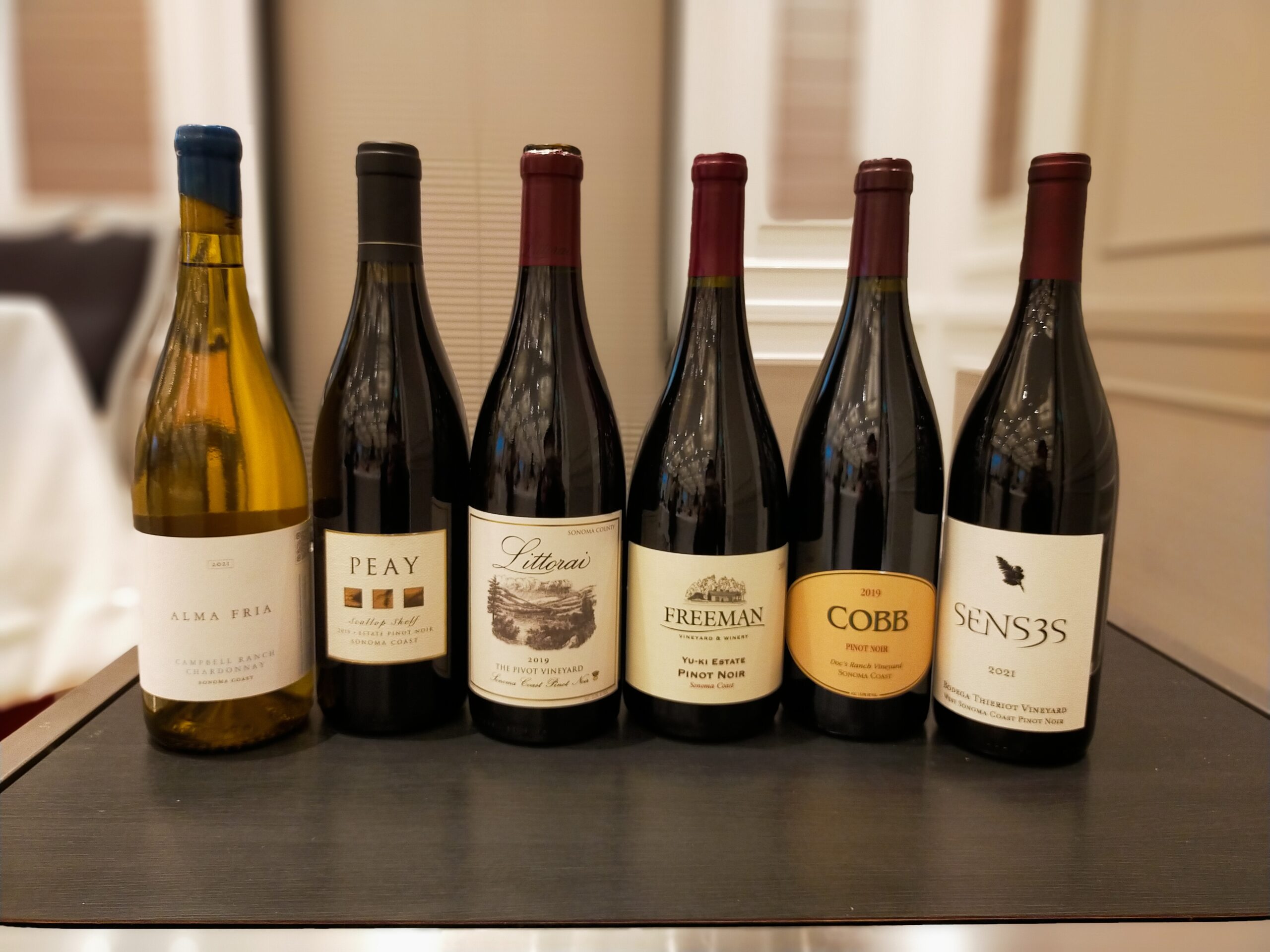


コメント